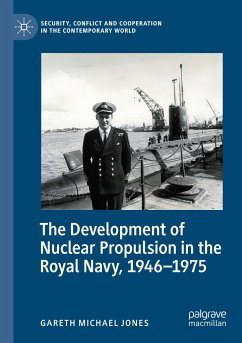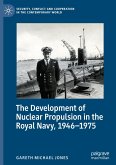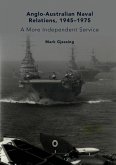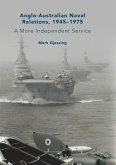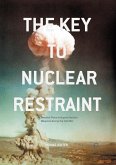This book examines the development of nuclear propulsion in the Royal Navy from the first proposal in 1946 to the start-up of the last core improvement for the first submarine reactor power plant PWR 1 in December 1974. Drawing from unreleased records and archives, the book answers questions around three main themes. Political: what problems were encountered in transferring nuclear knowledge from the USA to the UK in the post-war period, and how much support was there for the development of nuclear propulsion? Military: why was there a requirement to develop nuclear propulsion, and in particular, why submarines? Technical: were the problems associated with nuclear energy fully appreciated, and did the UK have the technical and engineering capability to develop nuclear propulsion? Aside from the political considerations and military motives for developing nuclear propulsion in the Royal Navy, the author focuses on the technical problems that had to be overcome by all participants in theRoyal Navy's development of nuclear propulsion, adding significantly to naval historiography. Providing a critical analysis of the political, technological, operational and industrial issues of introducing nuclear propulsion into the Royal Navy, the author situates his research in the context of the evolving Cold War, changing Anglo-American relations, the end of Empire and the relative decline of British power.
"The book is a model of primary-source historical research. Palgrave Macmillan has produced a handsome volume largely free of errors ... . the primary audiences for The Development of Nuclear Propulsion in the Royal Navy, 1946-1975 will be submariners (current and former) and scholars interested in nuclear history. The author deserves high praise for producing an outstanding book that deftly analyzes the technological, political, diplomatic, and industrial histories of the Royal Navy's nuclear propulsion program." (Timothy S. Wolters, Technology and Culture, Vol. 64 (4), October, 2023)
"The Development of Nuclear Propulsion in the Royal Navy, 1946-1975, is the first scholarly monograph to deal exclusively with this subject.Jones has done excellent work, having created a strikingly important book in its field." (Brian Bertosa, The Northern Mariner, cnrs-scrn.org, Vol. 32 (3), 2022)
"The Development of Nuclear Propulsion in the Royal Navy, 1946-1975, is the first scholarly monograph to deal exclusively with this subject.Jones has done excellent work, having created a strikingly important book in its field." (Brian Bertosa, The Northern Mariner, cnrs-scrn.org, Vol. 32 (3), 2022)

